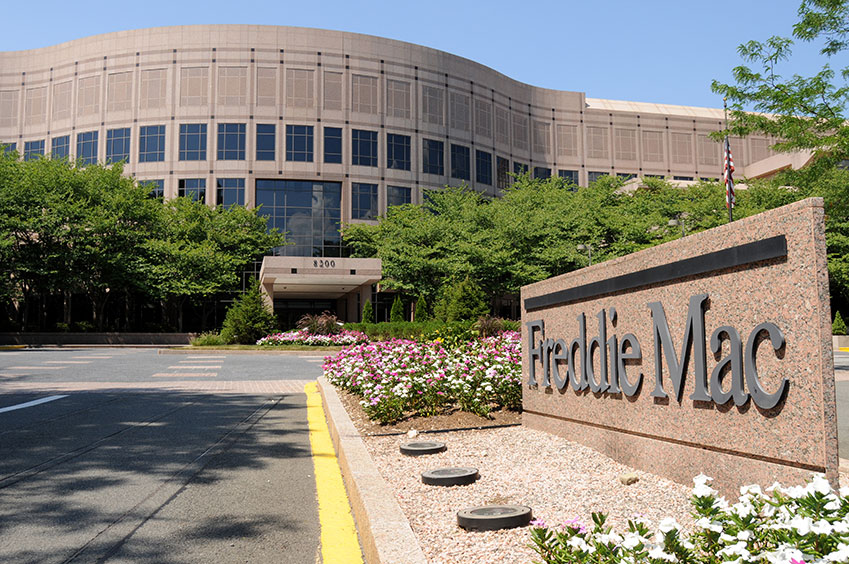How Freddie Mac and Fannie Mae Help Investors Secure Multifamily Loans
Investors with large multifamily portfolios are aware of the Fannie Mae Multifamily Loan program and the Freddie Mac Multifamily Loan program. These two organizations handle a large volume of multifamily loans made in the U.S. But in many cases, smaller portfolio owners don’t consider a Fannie Mae or Freddie Mac multifamily loan. They often have misconceptions about these agencies and often believe that these loans require owners to assign a certain percentage of their units to low-income housing with rents below what the current market dictates. However, this is not the case. While Fannie Mae and Freddie Mac offer discounted pricing for affordable properties, all market rate properties are eligible for financing. Both Freddie Mac and Fannie Mae are privately owned and operated by shareholders, while being backed financially by the federal government. In general, Freddie Mae and Fannie Mae offer the best rates and terms for multifamily loans. Investors can’t apply directly with Fannie Mae or Freddie Mac for a multifamily loan. They need to work with an experienced mortgage banker or broker to apply for these loans.
Both Fannie Mae and Freddie Mac play an important role in the U.S. financial system. They provide affordability, stability and liquid funds to banks, credit unions and mortgage companies so they can continue making loans to finance housing.
Fannie Mae
Fannie Mae was created in 1938 during the FDR administration during the Great Depression. Fannie Mae was established to provide local banks with federal money for the use of financing home mortgages with a goal to raise home ownership levels and affordable housing. Fannie Mae’s authority was broadened over time to include the acquisition of multifamily loans that are not separately insured by the Federal Housing Administration. Fannie Mae created a business division dedicated to purchasing multifamily loans in 1984. Since that time, Fannie Mae multifamily loans have provided a consistent supply of funding to the multifamily market. Fannie Mae’s primary mission in the multifamily housing market is to provide financing for workforce housing safe, sanitary, quality housing affordable to families with annual incomes at or below the median income of the areas where they live. Although Affordable Housing is a mission for Fannie Mae, all apartment properties are eligible regardless of rental rates and income levels. Fannie Mae multifamily loan volume was $69.5 billion in 2021.
The Fannie Mae large and small balance programs are some of the most widely used multifamily programs available. They offer a simplified loan approval process for long term fixed rate financing for apartments, manufactured housing, mobile home parks, and cooperative apartments.
Fannie Mae Small Balance Multifamily Loan Program Benefits
Description - Simplified loan approval process for long term fixed rate financing for apartments, manufactured housing, mobile home parks, and cooperative apartments.
Loan Amounts - $1,500,000 – $25,000,000+ nationwide (larger balance loans available through the Fannie Mae DUS platform)
Loan Terms - 5, 7, 10, 12-, 15-, 20- and 30-year Fixed Rates Available
Amortization - Up to 30 years, based on the age and condition of the property
Recourse - Loans are non-recourse (no personal guarantee) subject to carve-outs
Fannie Mae Large Multifamily Loan Program Benefits
Loan Amount - $6,000,000 and up
Loan Terms - Fixed rates for 5, 7, 10, 12, 15, 20 and 30 years
Amortization - Up to 30 years, based on property condition; Interest-only financing is available
Recourse - Loans are non-recourse (subject to standard carve-outs for “bad acts” such as fraud and bankruptcy)
Freddie Mac Multifamily Loans
Freddie Mac originally was named the Federal Home Loan Mortgage Corporation (FHLMC), but in 1997 they changed it to Freddie Mac. It was created in 1970 and it helped lenders have access to liquid funds for multifamily loans. In turn that helped investors develop rental housing to meet the needs of Americans that are unable purchase a home of their own. Since that time, Freddie Mac has grown to be a provider of loans for companies and individuals who want to get the best loan rates and terms along with a quick turnaround time.
Freddie Mac is designed to protect the multifamily housing market. It becomes more valuable and takes on more in times of economic turmoil, when liquidity is reduced. It contracts when other funding sources are readily available. They also provide affordable lending options to help developers offer low to moderate income housing units. In 2021, Freddie Mac provided a broader range of support for renters than ever before. Freddie Mac financed $70.7 billion in multifamily housing support, with the overwhelming majority affordable to low- and moderate-income renters.
The Freddie Mac small balance multifamily loan program otherwise known as Fredie Mac SBL is the most widely used multifamily program that they offer. Borrowers must typically meet a threshold for net worth and liquidity and properties must be cash flowing with at least 90% occupancy for 90 days.
Loan Amount - $1,500,000 - $6,000,000, up to $7,500,000 in large markets
Loan Terms - 5-, 7-, and 10-year fixed rate options. After fixed rate period loan can either mature or convert to an adjustable rate (hybrid adjustable) at borrower option.
Amortization - Up to 30 years
Recourse - Non-Recourse, with standard carve-out provisions
Fannie Mae and Freddie Mac offer incredible multifamily financing solutions to investors looking for multifamily loans. Call us today at 877-548-9454 or you can submit a Free No Obligation Quote.


